Italian Easter bread is a traditional bread that celebrates spring, renewal, and the resurrection. Each twisted ring has a whole egg nestled in the center. The dough is scented with citrus zest, and the finished bread is irresistibly fluffy and soft with a texture reminiscent of challah.
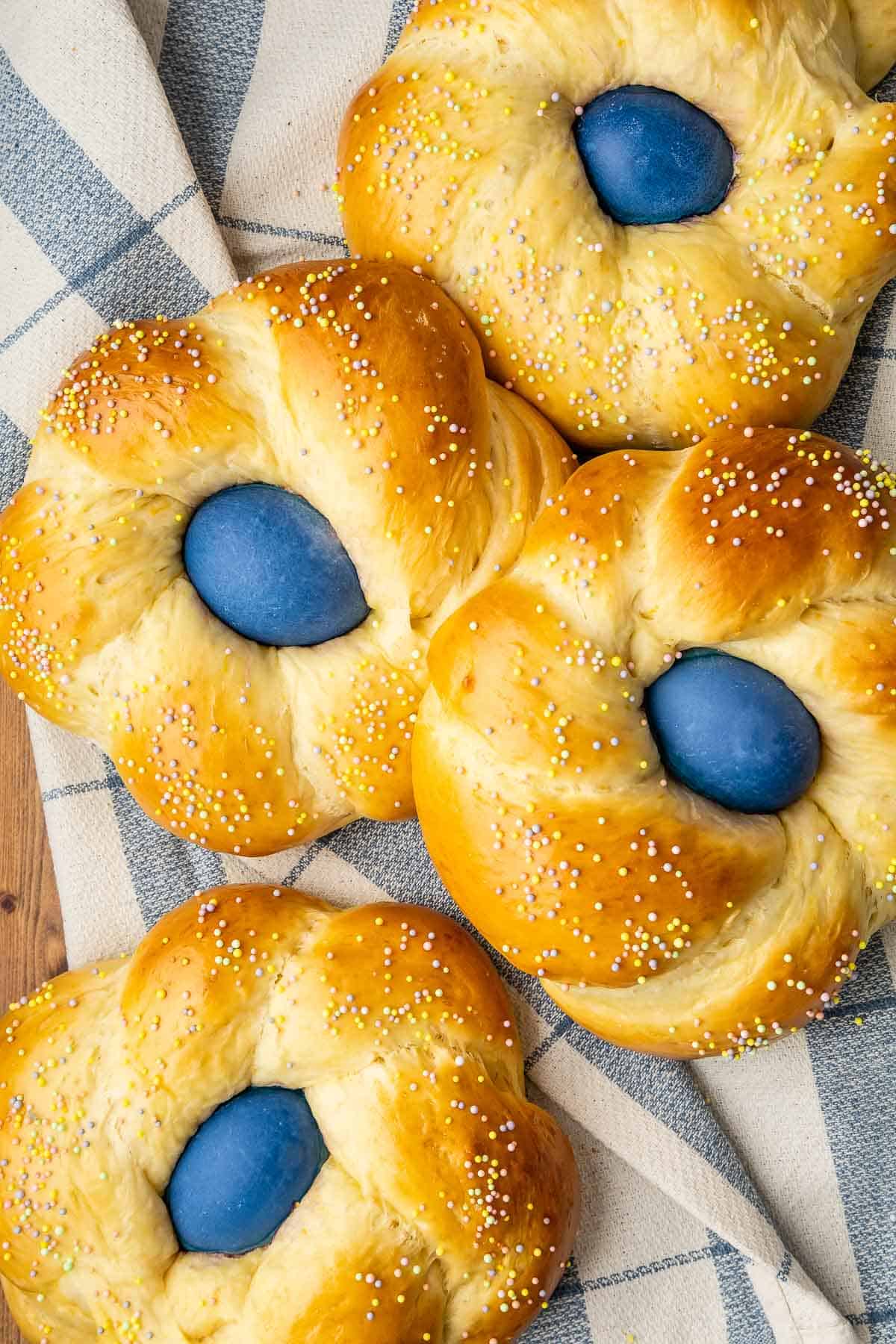
Italian Easter Bread is flavored with lemon zest, orange zest, and vanilla extract. Of course, it’s then fitted with its signature brightly colored egg and topped with sprinkles. The eggs not only add celebratory flair to Easter bread, but they are also considered a symbol of rebirth.
The name of this recipe may seem to imply there is one definitive Easter bread in Italy. In fact, nothing could be further from the truth! There are as many variations of Easter bread across the regions and subregions, ranging from savory breads such as pizza di Pasqua in central Italy to the sweet breads from the south.
In Calabria, you’ll find cuzzupa, flavored with aniseed or citrus, topped with a hardboiled egg, and a sheen of lemon glaze. In Sardinia, they make coccoi cun s’ou and in Sicily, cuddura cu l’ova, where a raw egg is encased in the dough and cooked in the oven. The breads may be shaped into doves, dolls, baskets, or rings, each implying a different meaning.
This recipe is a traditional Easter bread in southern Italy. It is shaped into four individual rings, twisted around a dyed egg, and presented at the table. Serve it as part of your Easter feast alongside Healthy Deviled Eggs, Roasted Leg of Lamb and this Asparagus Salad.
Table of Contents
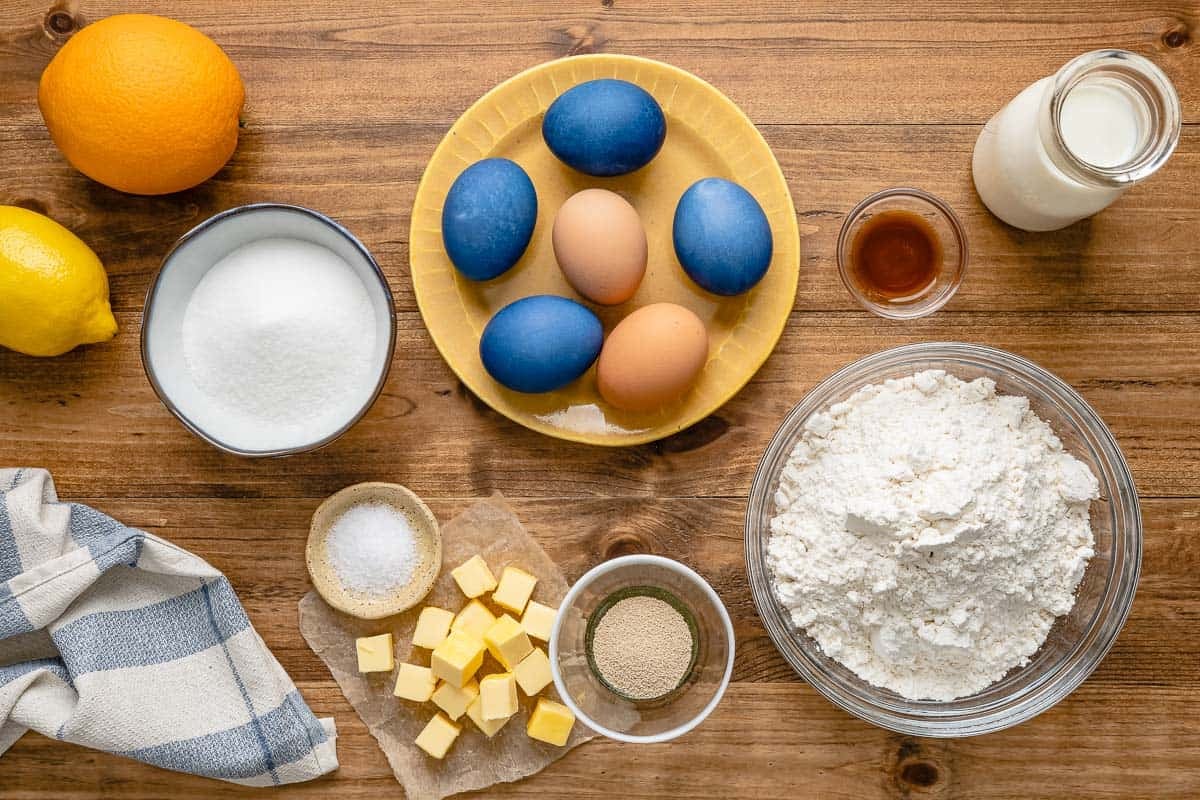
What’s in Italian Easter Bread
The ingredients for this bread are easy to find, and are probably already pantry staples in your house. The only item on your shopping list could very well be the dye for the eggs. It’s humbling to note that historically, this bread was reserved for special occasions because of the expensive and rich ingredients like milk, sugar, eggs, and butter.
- Milk: While I used whole milk, feel free to use reduced fat or skim milk instead. Heat the milk to 105-115°F. Make sure the milk isn’t too hot, or it will kill the yeast.
- Active dry yeast: Enriched breads require more yeast than standard leaner breads to get going.
- Sugar: This bread is lightly sweet, but the sugar also helps make the bread soft and brown nicely in the oven.
- Eggs: The protein and fat in eggs add to the structure, softness, and golden color.
- All-purpose flour: While you may be tempted to reach for bread flour, the all-purpose flour in this recipe makes a tender, fluffy loaf. Bread flour would make the bread too chewy.
- Unsalted butter: A small amount of butter adds flavor and richness.
- Kosher salt: Even in sweet recipes, salt enhances the flavor.
- Vanilla extract: Another flavor enhancer. Without it, the bread may seem bland or one-dimensional.
- Zest: I love using both lemon and orange zest here, but you can stick to just one or the other, depending on what you have on hand.
- Dyed uncooked eggs: When it comes to the eggs you can dye them whichever color you like, or leave them undyed. Just make sure they’re uncooked. They will cook in the oven.
- Multicolored nonpareils: This is a celebration bread, so have fun with some colorful nonpareils or sprinkles.
How to Make Italian Easter Bread
Taking about four hours, this baking project does require a time commitment. Most of the time is hands-off while the yeast does the work. While the sponge rises take the butter out of the refrigerator and dice it so it softens enough to incorporate into the dough later. I zest the citrus at this point and have the orange for a snack while I wait. If you’re worried that the zest will dry out, you can cover it and keep it in the fridge in the meantime.
- Make the sponge: In the bowl of a stand mixer, dissolve the yeast in the milk and let stand until it begins to foam, 5 to 10 minutes. Add a 1/4 cup sugar, eggs, and 2 cups flour. Stir with a rubber spatula to combine. The mixture will resemble pancake batter. Cover the bowl and set aside in a warm spot to rise for 30 minutes, until the surface is bubbly. In the meantime, take the butter out of the refrigerator, and dice it into 1/2-inch pieces.
- Make the dough: To the sponge, add the 2 cups flour, 1/4 cup sugar, butter, salt, vanilla, and zest. Fit the mixer with the dough hook attachment, and mix on the lowest speed until the dough comes together into a rough ball, about 1 minute. Increase the speed to level 2 and continue kneading for 7 minutes. The dough should be smooth and elastic and pull away from the sides of the bowl (the dough may still stick to the bottom of the mixing bowl).
- First rise: Cover the bowl and set it in a warm spot to rise for 1 1/2 hours, or until roughly doubled in size.
- Divide the dough: Punch down the dough and divide it into 8 equal portions (approximately 120 to 125g each).
- Assemble the loaves: Line two sheet pans with parchment paper. Use your palms to roll out each piece of dough into a 12-inch rope. Pinch two ropes together at the ends and twist them several times.
- Form a wreath: Pinch the ends together so the twisted rope forms a wreath and tuck the ends underneath. Repeat with the remaining ropes of dough.
- Second rise: Place two loaves on each of the lined baking sheets. Cover with a damp tea towel or plastic wrap and set aside in a warm spot to rise for 1 hour, or until puffy and almost doubled in size.
- Prepare the oven: Arrange racks in the upper and lower thirds of the oven. Preheat the oven to 400°F.
- Decorate the loaves: Gently nestle a dyed uncooked egg into the center of each loaf. Make an egg wash by whisking a large egg and a tablespoon of milk together in a small bowl. Use a pastry brush to brush each loaf with a light coating of the egg wash, avoiding the dyed eggs. Sprinkle each loaf with colorful nonpareils.
- Bake: Bake for 20 minutes, or until golden, rotating the pans and switching their position halfway through.
- Cool: Transfer the loaves to a wire rack to cool. Let cool before serving.
What is a Sponge (Preferment)
The sponge method in bread baking is when you mix a portion of the flour, a portion (or all) of the yeast, and some (or all) of the wet ingredients to begin fermenting, before adding the rest of the ingredients that form the final dough.
Using a sponge adds extra fermentation time, and longer fermentation means more flavor. It’s especially helpful in enriched bread to give the yeast a head start by adding in stages the fat and sugar, ingredients that can slow down fermentation.
It also improves the texture and structure of the dough. This method only takes 30 extra hands-off minutes and emulates the benefits from sourdough starters (lievito madre) or other preferments (biga, as in this Focaccia recipe) used in traditional Italian bread baking.
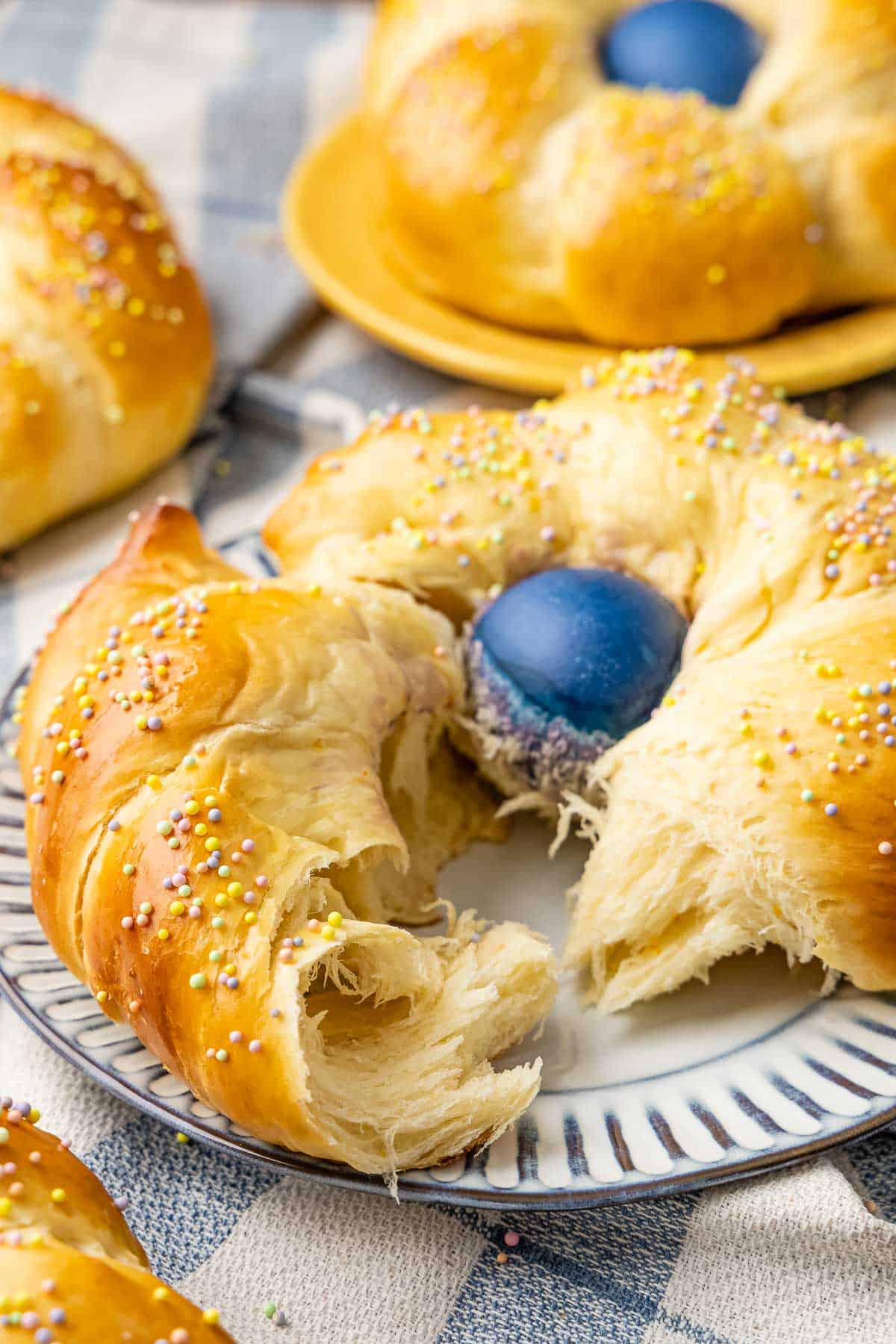
How to Naturally Dye Eggs for Italian Easter Bread
You can use your go-to method for dying eggs, but I wanted to experiment with natural dyes. To create this deep blue, I used red cabbage to color the eggs. To dye eggs naturally follow these steps:
- Roughly chop a small head of red cabbage and place it in a medium saucepan, along with enough water to fully submerge the cabbage.
- Boil for 15 minutes, then strain the water into a jar and let it cool to room temperature.
- Stir in 2 tablespoons of vinegar.
- Add the uncooked eggs, cover, and store in the refrigerator until the eggs take on the amount of color you’d like.
- To achieve the deep blue, you see in the photographs, I left the eggs to soak in the refrigerator overnight.
What to Serve with Italian Easter Bread
This is a festive holiday bread so it only makes sense to serve it with other special occasion foods. Lamb is a common dish served around Easter. You could try it with Roasted Leg of Lamb or Grilled Lamb Chops if the weather permits. I like to round things out with springy side dishes like artichokes and lemony asparagus.
More Bread Recipes We Love
Browse all Mediterranean recipes.
Visit Our Shop.
The Mediterranean Dish Cookbook
The Mediterranean Dish Cookbook: 120 Bold and Healthy Recipes You’ll Make on Repeat. Enjoy food from the Mediterranean, using easy-to-find ingredients and easy-to-follow recipes.
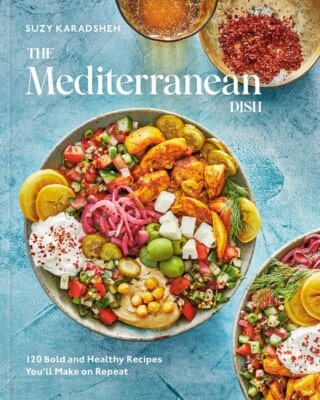
Italian Easter Bread
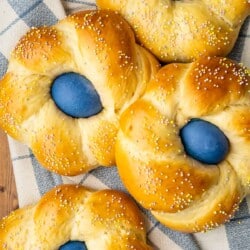
Ingredients
For the Sponge:
- 1 cup (240ml) whole milk, lukewarm
- 2 1/4 teaspoons (7 grams) active dry yeast
- 1/4 cup (50 grams) granulated sugar
- 2 large eggs, at room temperature
- 2 cups (240 grams) all-purpose flour
For the Dough:
- 2 cups (240 grams) all-purpose flour
- 1/4 cup (50 grams) granulated sugar
- 1/4 cup (57 grams) unsalted butter
- 1 teaspoon kosher salt
- 1 teaspoon vanilla extract
- Zest of 1 lemon
- Zest of 1 orange
For the Decoration:
- 4 dyed eggs, (uncooked)
- Multicolored nonpareils or sprinkles
For the Egg Wash:
- 1 large egg
- 1 tablespoon milk
Instructions
- Make the sponge: In the bowl of a stand mixer, dissolve the yeast in the milk and let stand until it begins to foam, 5 to 10 minutes. Add the sugar, eggs, and flour, and stir with a rubber spatula to combine. The mixture will resemble pancake batter. Cover the bowl and set aside in a warm spot to rise for 30 minutes, until the surface is bubbly. In the meantime, take the butter out of the refrigerator, and dice it into 1/2-inch pieces.
- Make the dough: To the sponge, add the flour, sugar, butter, salt, vanilla, and zest. Fit the mixer with the dough hook attachment, and mix on the lowest speed until the dough comes together into a rough ball, about 1 minute. Increase the speed to level 2 and continue kneading for 7 minutes. The dough should be smooth and elastic and pull away from the sides of the bowl (the dough may still stick to the bottom of the mixing bowl).
- First rise: Cover the bowl and set it in a warm spot to rise for 1 1/2 hours, or until roughly doubled in size.
- Divide the dough: Punch down the dough and divide it into 8 equal portions (approximately 120 to 125g each).
- Assemble the loaves: Line two sheet pans with parchment paper. Use your palms to roll out each piece of dough into a 12-inch rope. Pinch two ropes together at the ends and twist them several times. Pinch the ends together so the twisted rope forms a wreath and tuck the ends underneath. Repeat with the remaining ropes of dough.
- Second rise: Place two loaves on each of the lined baking sheets. Cover with a damp tea towel or plastic wrap and set aside in a warm spot to rise for 1 hour, or until puffy and almost doubled in size.
- Prepare the oven: Arrange racks in the upper and lower thirds of the oven. Preheat the oven to 400°F.
- Decorate the loaves: Gently nestle a dyed uncooked egg into the center of each loaf. Make an egg wash by whisking a large egg and a tablespoon of milk together in a small bowl. Use a pastry brush to brush each loaf with a light coating of the egg wash, avoiding the dyed eggs. Sprinkle each loaf with colorful nonpareils.
- Bake: Bake for 20 minutes, or until golden, rotating the pans and switching their position halfway through.
- Cool: Transfer the loaves to a wire rack to cool. Let cool before serving.
Video
Notes
- If you want to dye the eggs naturally, do so the day before to achieve the deep blue color seen in the photos.
- Visit our shop to browse quality Mediterranean ingredients including olive oils, honey, jams, and spices.
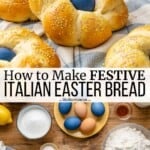
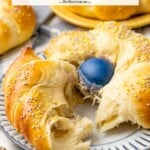
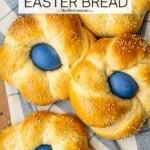
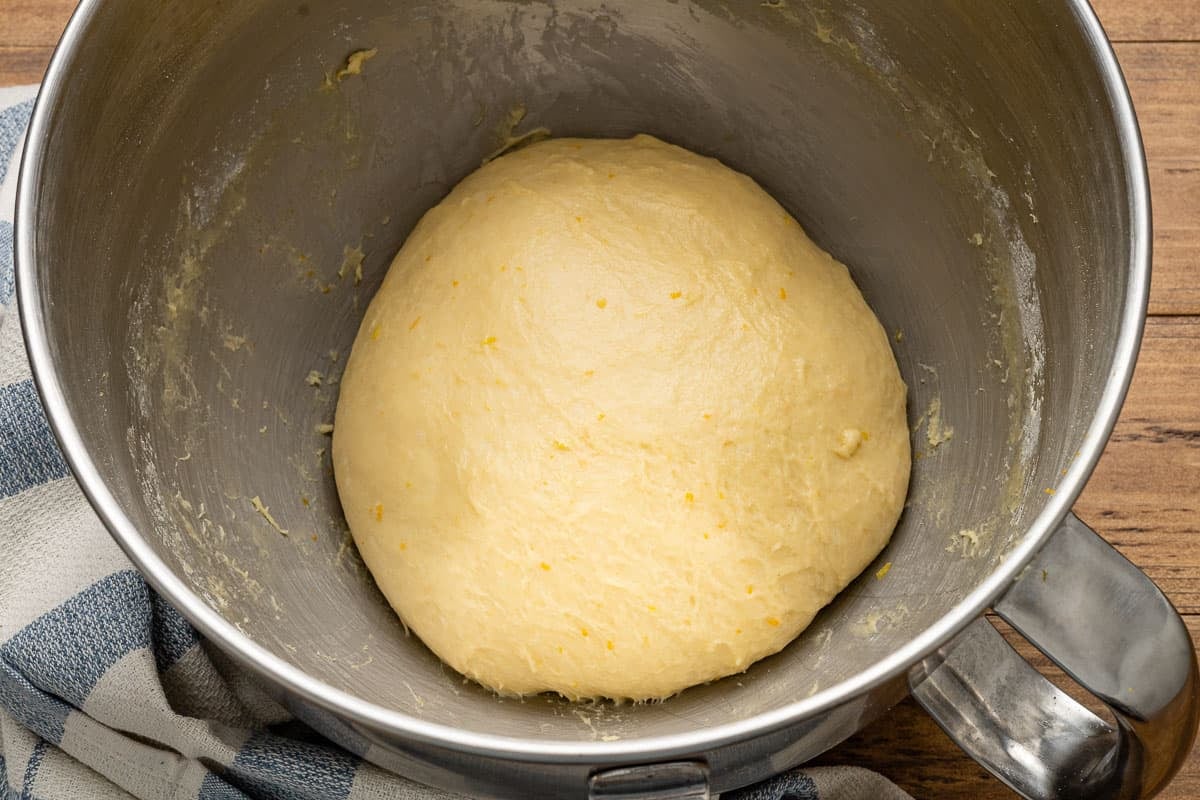
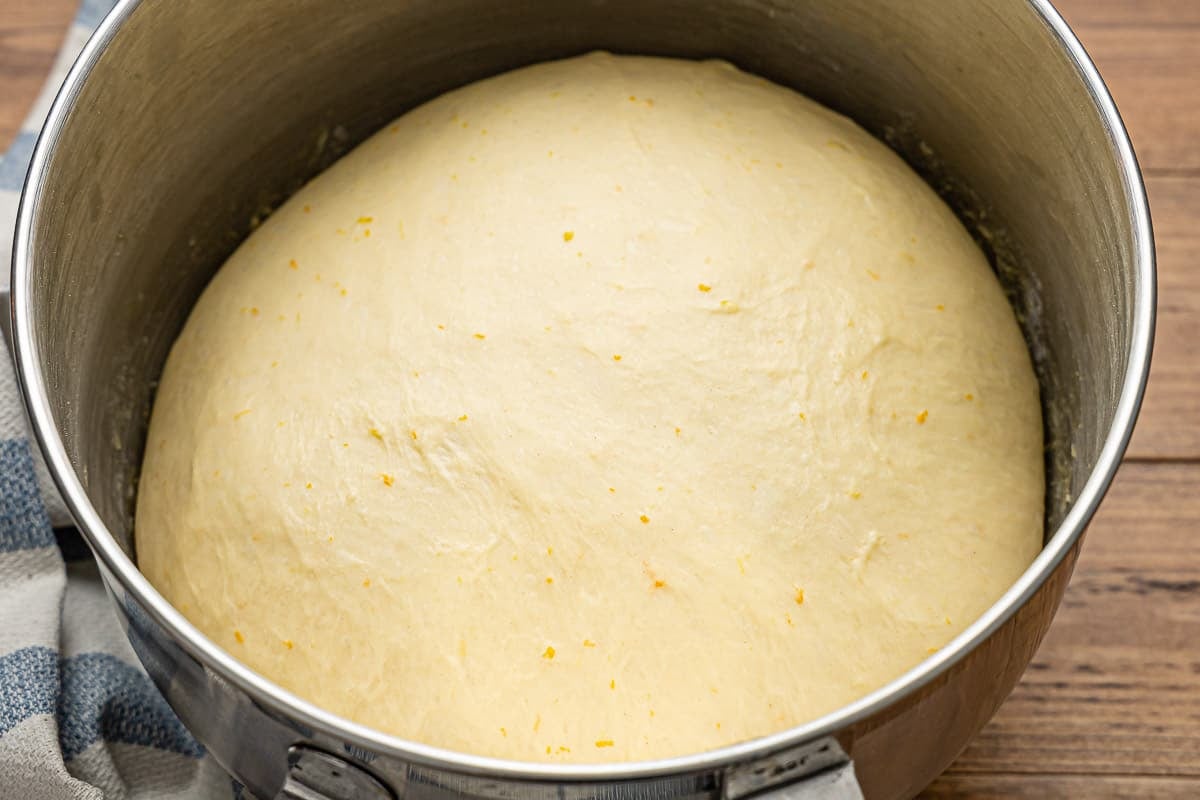
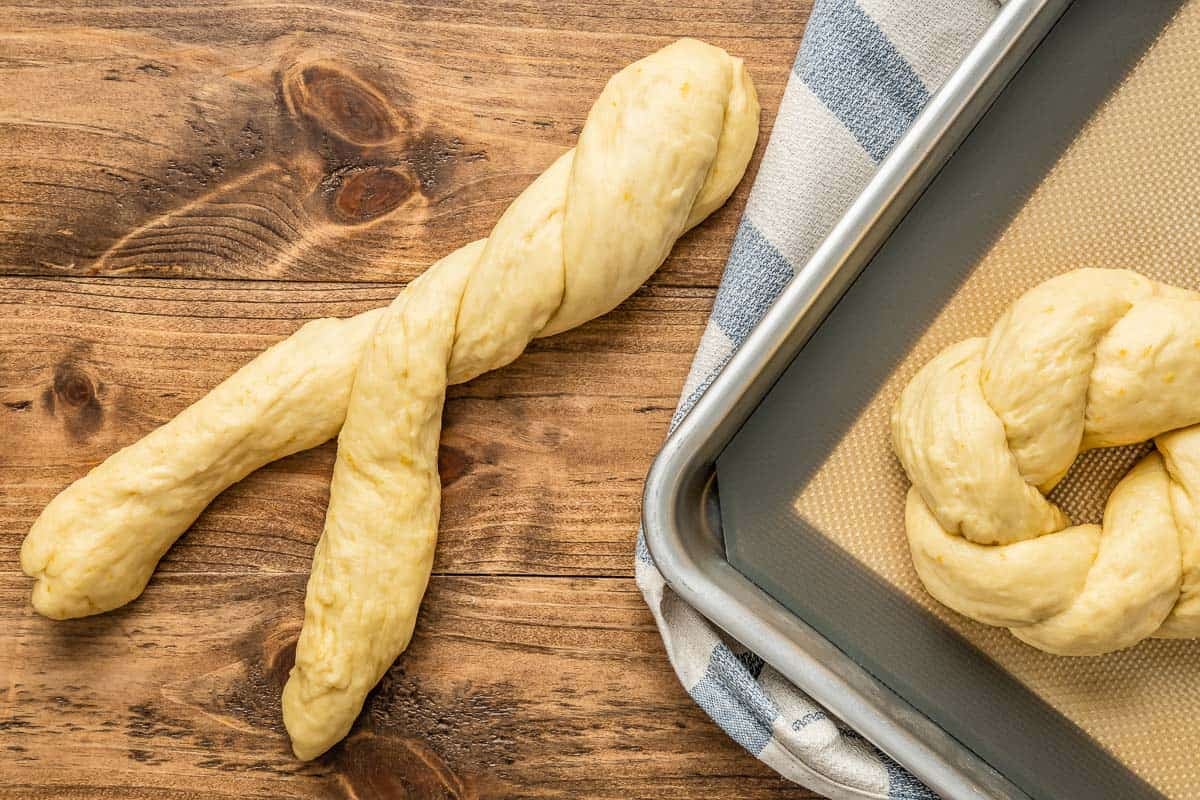
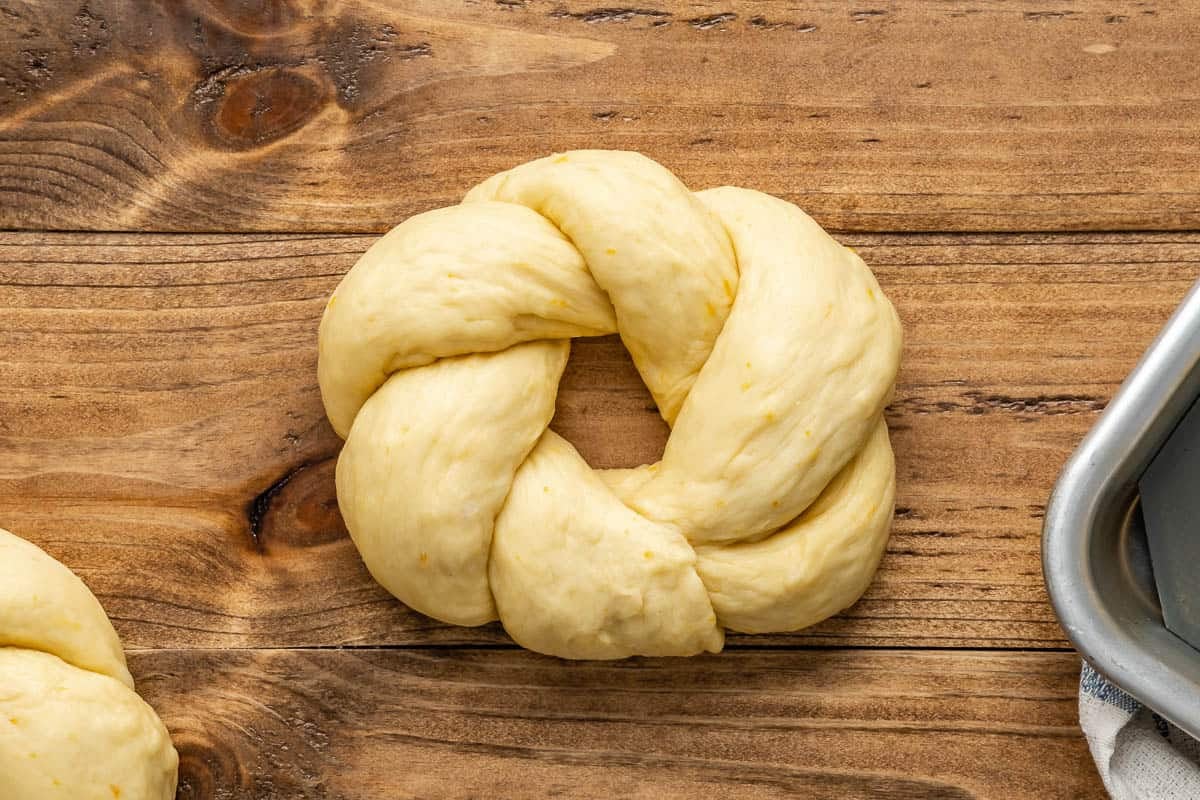
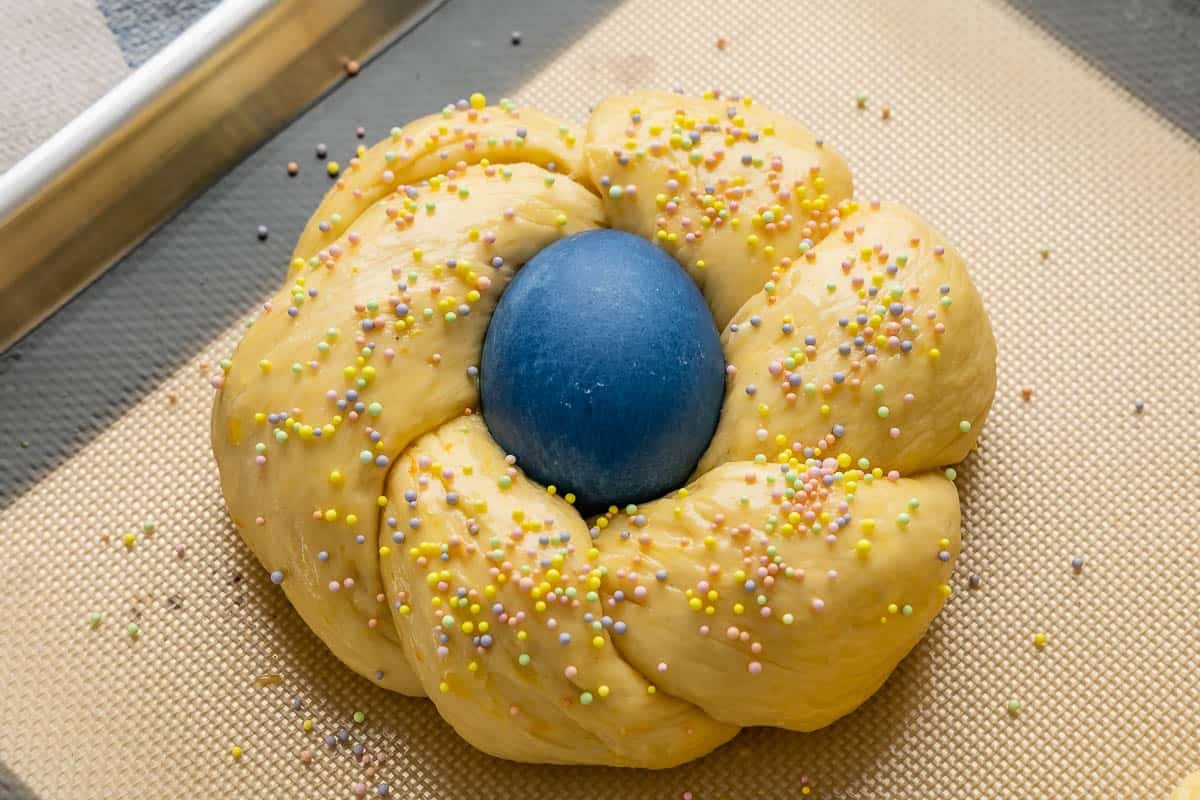
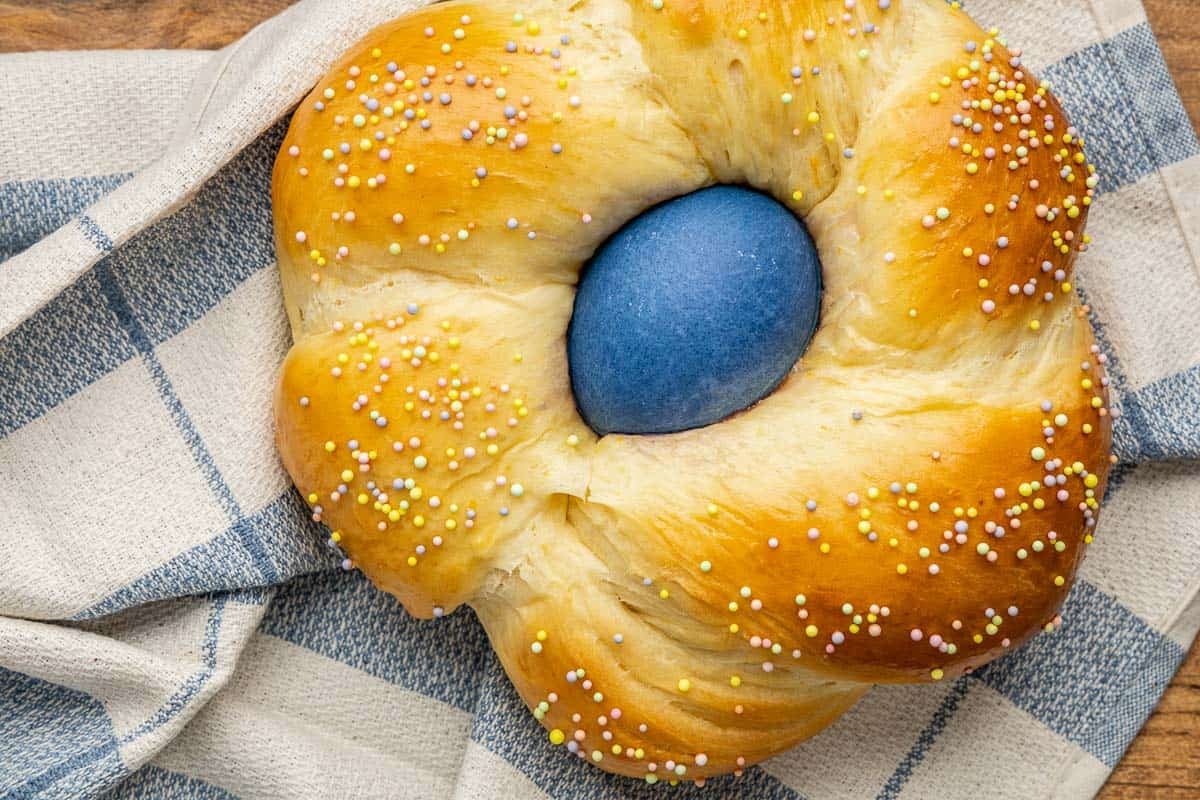
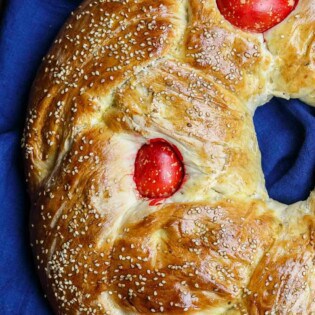
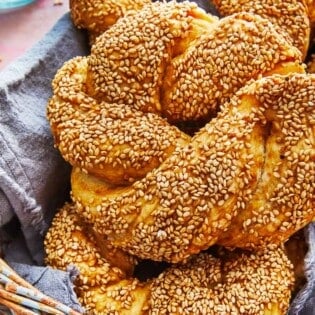
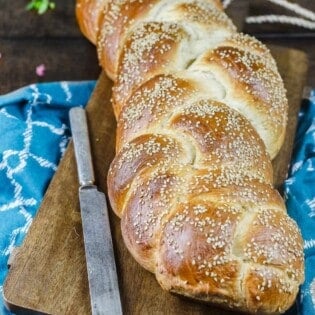
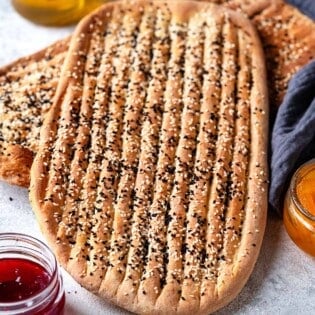
Seems to go against the Mediterranean diet with the carbs, cholesterol and sugar.
Looks appealing.
Hi, Mieka! I’m Summer and I work here at The Mediterranean Dish. We have loads and load of Med Diet recipes, but our site also celebrates the cultural foods throughout the Mediterranean. This means we also have celebration dishes, like this Italian Easter Bread, that are enjoyed on special occasions. It’s all about balance! Enjoy!